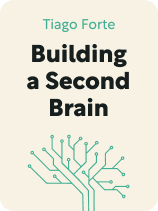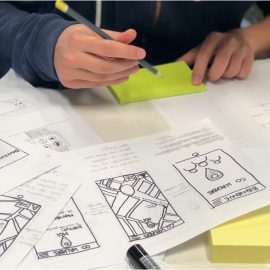

This article is an excerpt from the Shortform book guide to "Building a Second Brain" by Tiago Forte. Shortform has the world's best summaries and analyses of books you should be reading.
Like this article? Sign up for a free trial here.
How do you make perfect notes that are easy to understand? Why is refining notes important for projects?
Tiago Forte’s book Building a Second Brain explains that perfecting your notes is a good way of increasing your productivity and creative potential. To do this, you need to begin refining your notes.
Read below to learn how to make perfect notes by practicing refinement.
Refine Your Notes
Forte explains that learning how to make perfect notes—distilling them into their most basic format and removing any irrelevant information—is the first step in creating a project. It should take place right before you create something based on those notes. This shouldn’t take place at the same time as recording or sorting.
Refining your notes to their core essence will increase productivity and creativity. It’ll save time in the future by allowing you to understand the note’s utility as soon as you look at it. It’ll also make it easier for you to apply the information to other relevant current or future projects. To effectively refine your notes, Forte recommends using the following process (which he calls Progressive Summarization):
Since you’ve already saved the smallest bit of information from the source, you’ll start the refinement process by bolding the main points of the small chunk of information you’ve saved. For example, if you’ve saved a paragraph from an article, find and bold the main points of the excerpt—the thesis, sentences that provide important explanations, keywords that remind you why you saved the information, or parts that especially stuck out to you. If you have an especially long or complex note, you can further distill it by highlighting or underlining the most important or surprising points of the bolded sections.
Then, for especially unique or valuable notes, Forte recommends including a short summary that explains the main points of the source and why you’ve saved it (if you might forget) in as few words as possible. Using bullet points may be helpful for this step.
Do the Pros of Forte’s Refinement Outweigh the Cons?
While Forte argues that his method of perfecting notes increases productivity and creativity, critics of this process argue that it might actually decrease these abilities for a few different reasons.
First, these critics argue that Forte’s recommendation to refine information right before creating, rather than immediately after saving, encourages you to over-collect information. This is because refining a note helps you identify how useful it is—if you don’t at least start to refine notes before saving them, you might be saving massive amounts of irrelevant information and cluttering your ESS.
Second, critics argue that Forte’s refinement process (bolding, highlighting, then summarizing) causes you to focus more on understanding the original source’s perspective than on developing your own original insights from it, ultimately decreasing productivity.
Third, refining your notes might actually decrease the progress you make toward your goals due to the Collector’s Fallacy: collecting and engaging with information is easy and makes you feel like you’ve made progress toward goals even if you haven’t actually created anything. Spending multiple work sessions refining your notes might make you feel like you’ve done something productive with your ESS information when you haven’t actually created anything. This false confidence might ultimately prevent or slow your progress toward your goals.

———End of Preview———
Like what you just read? Read the rest of the world's best book summary and analysis of Tiago Forte's "Building a Second Brain" at Shortform.
Here's what you'll find in our full Building a Second Brain summary:
- Why we get frustrated and overwhelmed in the age of information
- Why modern humans need an external storage system (ESS)
- How to make and organize an ESS to increase creativity and productivity






